REMEMBERING P. RAMASAMY
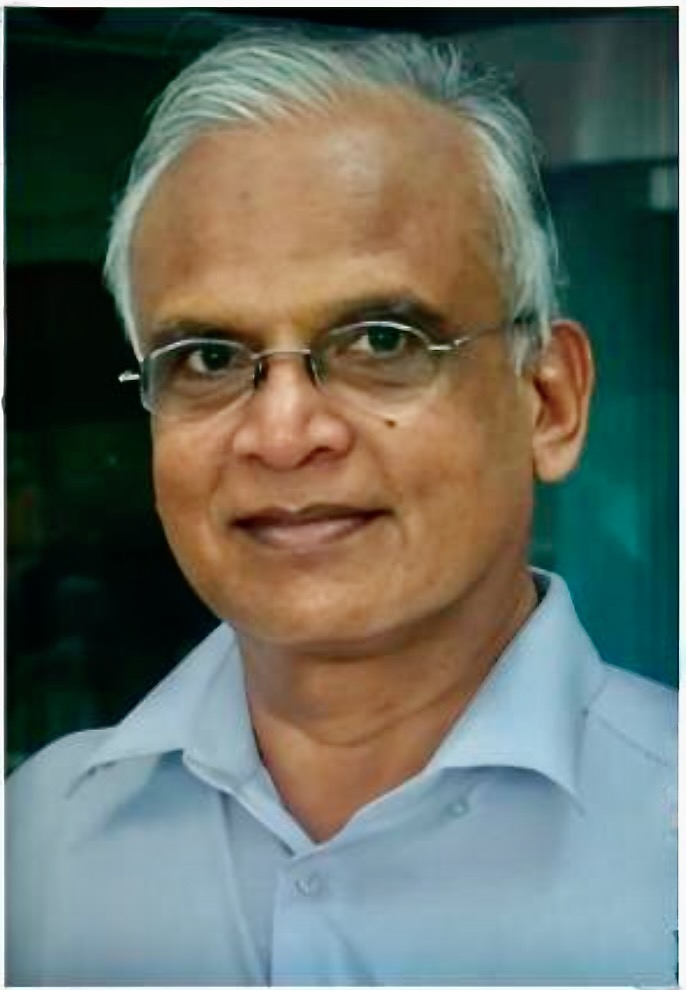
27 April 1950 to 16 April 2025
The Malaysian Bahá’í community, and by extension the countries in which Ramasamy Palaniappan served has been robbed of one of its stoutest believers. Rama as he was affectionately called, dedicated his entire life, time and energy for the promotion of the Cause of Bahá’u’lláh since accepting the Faith on 20 June 1971. From the day Rama as he was fondly called accepted the Faith, he was on fire with the love of Bahá’u’lláh, Whom he made the very centre of his life. His deep understanding on the Faith rooted very much early in his Bahá’í life. Going into the early days of Rama would bring to light that he was being prepared and destined to play a great role in the Faith in a number of ways, of which he was unaware at first. Rama attended the Batu Road Primary School, which is still situated in the Tunku Abdul Rahman Road in Kuala Lumpur. He would get up at 5:00 in the early morning hours and rode in the back of a ten-ton lorry, a bare and uncomfortable mode of transport that covered a distance of 35 kilometres. It was later that benches and a protective cage were added to the lorry. Eventually buses replaced these lorry rides. Mr. Krishnamurthy Alagiri, his schoolmate who travelled with him mentions, “Ramasamy’s quiet presence during the journey stood out. Even as a young boy, he stood out for his calm demeanour and maturity.” Rama was sent to English medium school during his primary school days. His brother-in-law Mr. Kolandan was a Tamil school teacher. His mother who was working as a rubber tapper had to leave him as a child with his sister Thangammal who was just married and had no children of her own then. Rama’s brother-in-law used to teach him the Tamil language.
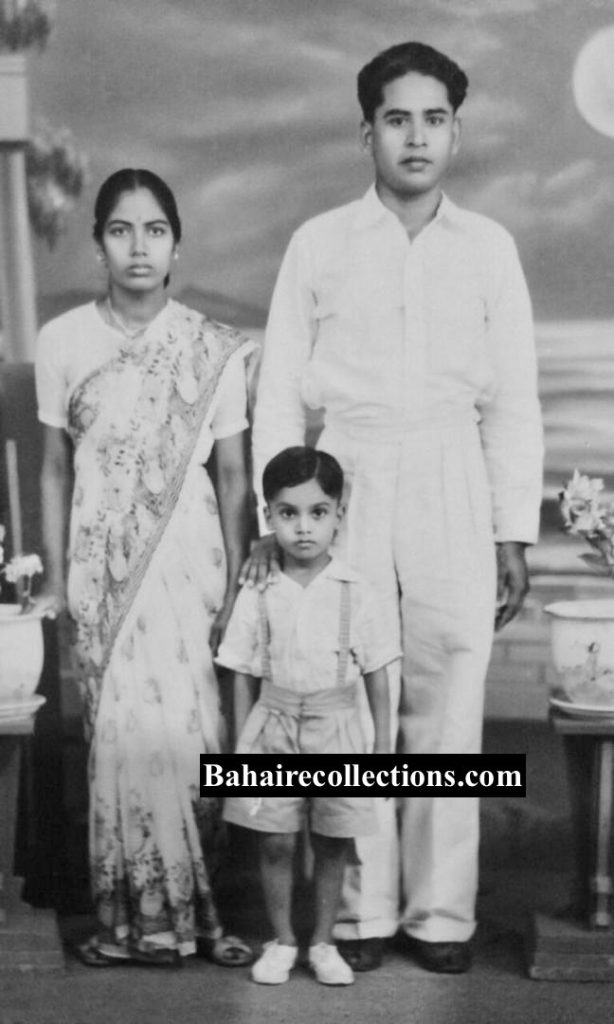
Rama stands between his sister Thangammal on left and his brother-in-law Kolandan on right.
The Tamil language that he learnt through his brother-in-law not only stuck with him but developed over time. By the time he was twelve he had started reading Tamil weeklies and other books. One of the books he read at that time was an abridged version of the Mahabharata, one of the two major epics of the Hindu religion. To get a deeper understanding of Hinduism he watched Tamil movies that had storylines along Hindu mythology such as “Maaya Bazar” and “Karnan” which portrayed segments of the life and legacy of Lord Krishna, acted out by the film icon N. T. Rama Rao. He went one step ahead to even learn the ancient language of Sanskrit to get a better understanding of Hinduism. He read other Hindu mythology books as well as other popular Tamil literature. By this time Rama had already become fluent in both the English and Tamil languages. A strong foundation was already being laid for him to carry out translation of Bahá’í books from English to Tamil.
Rama was already being prepared to accept the Faith early in his life. The first Bahá’í he met, was his form six classmate, although Rama did not know he was a Bahá’í. His classmate never revealed to Rama that he was a Bahá’í during the two years they were together. A few years later when Rama had become a Bahá’í, he met this former classmate and asked him why he did not reveal himself to be a Bahá’í during their school years, but there was no convincing answer forthcoming from him. Rama concluded that perhaps Bahá’u’lláh was waiting for the opportune moment to enlist him under His banner.
Rama was brought up a simple Hindu way by his father. Even as a child in the late fifties and early sixties, Rama vividly remembered reading about religious figures like Lord Krishna and Jesus Christ. Later Rama had discussions with his friends on Hinduism which somehow made him a Hindu fanatic. He started to view other religions with disdain and became actively involved in the Divine Life Society. There were many such Hindu based movements during that time.
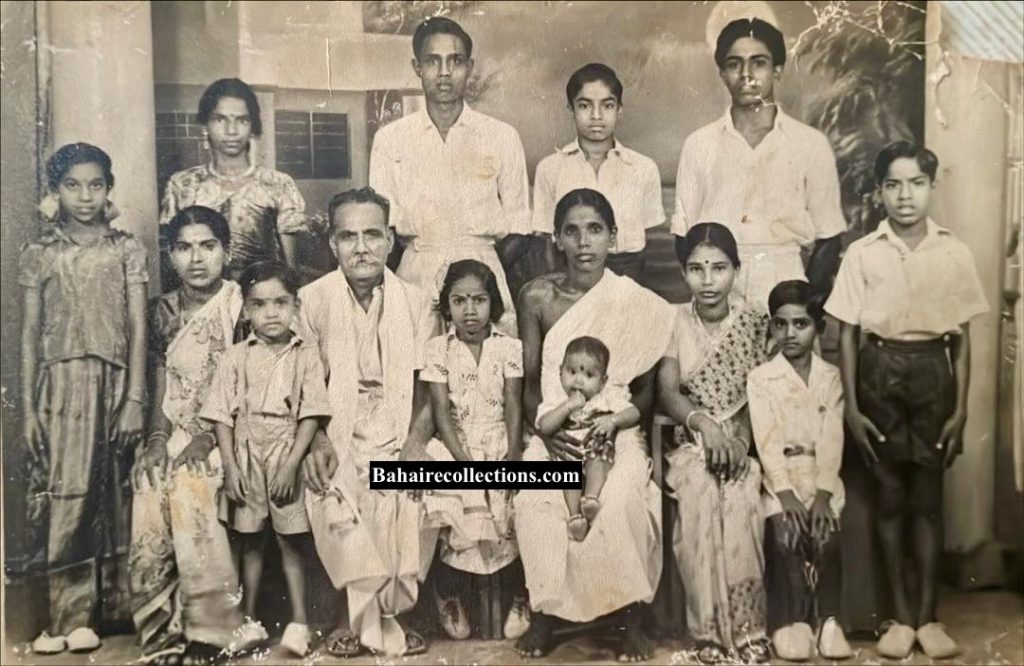
A family photo. Rama stands at left between his mother Maraie and father Palaniappan.
In 1971, Rama left home to start work in the Rubber Research Institute in Ampang Jaya, near Kuala Lumpur. From there he moved to work in Kuala Lumpur. Within a few days of work, a colleague and a Bahá’í by name of S. Balasekaran came to him and casually asked if he had heard of the Bahá’í Faith. Rama thought this must be yet one of those Hindu based cults. What provoked his thought was a statement from Balasekaran that Bahá’u’lláh is the return of Lord Krishna as promised in the Bhagavad Gita, a Hindu Holy Scripture. Until then nobody had even distinctly told Rama that Lord Krishna had already returned. He did not say anything to Balasekaran. Something made him believe deep inside that Lord Krishna had returned in the name of Bahá’u’lláh. Yet he wanted to investigate more and be sure. From that moment the spark that was ignited in his soul caught on and he started reading books on the Bahá’í Faith, like Bahá’u’lláh and the New Era, Renewal of Civilization, Wine of Astonishment, Thief in the Night, God Loves Laughter, Release the Sun and a few other books. Having read the books Rama was attracted to the Faith and started attending meetings at the National Bahá’í Centre at 32, Jalan Angsana, Kuala Lumpur. One of those who taught Rama was the late Mr. Stephen Manoharan who told him, “This is a new Light for mankind.” Some others too spoke to him on the Faith. By this time he was drawn even closer to the Faith. On 20 June 1971, he went to the same National Bahá’í Centre. A Chinese Teaching meeting was in session where Mrs. Shantha Sundaram, member of the National Spiritual Assembly of Malaysia was addressing that meeting. Rama who was already known to those squatting in the National Bahá’í Centre was taken to the back room where the late Mr. Selvaraja talked to him in great depth about the Faith. At that moment, around one month after hearing about the Faith, Rama was inspired to sign the Bahá’í Declaration Card.
From the day Rama as accepted the Faith he was on fire with the love of Bahá’u’lláh, Whom he made the very centre of his life. He was highly energetic, active and full of enthusiasm to serve the Cause and lost no time in finding several paths to serve. Since Ampang Jaya where Rama resided was part of the Kuala Lumpur community until 1974, he started to become actively involved in the activities in Kuala Lumpur. The first book that Rama read after becoming a believer was the Dawn Breakers. It was this book that truly transformed him. From then onwards, his conversations with the believers always centred on the Writings of the Faith, which he loved so much. He loved the Writings of the Central Figures of the Faith and took the greatest liking to the Writings of the beloved Guardian Shoghi Effendi. Rama, as a bookworm, started purchasing Bahá’í books from the Bahá’í bookshop and over time had a huge library at his home.
Slightly more than a month after accepting the Faith, Rama participated in the Bahá’í Summer School held in Port Dickson. This was another single-most event that had a strong impact on his Bahá’í life. This Summer School saw a record of 250 Bahá’ís attending, and this unexpected response required a few Bahá’ís to share beds. The majority of the Bahá’ís attending were new believers. The Bahá’ís from rubber plantations turned out in large numbers. The Bahá’í World Centre had just released a new set of slides on the Holy Places in the Holy Land. This slide show stole the hearts of all participants including Rama who felt the slide show elevated their spirits higher. It was not only the talks that were presented, but people of various ethnic, racial and cultural background consorting with full fellowship was something he had never witnessed before in the outside world. He saw that the Bahá’ís not only preached, but also practiced what they preached.
In about 1972 Rama shifted his residence to the settlement at the Rubber Research Experimental Station close to Sungei Buloh town. At the Rubber Research Experimental Station, he worked as a Research Assistant. He bought a 50 cc Honda motorcycle that took him places. His first area of service was bringing the Faith to the Tamil-speaking population residing close to his place of residence such as Batang Berjuntai Estate, Thennamaram Estate, Tuan Mee Estate, Strathalie Estate, Kampong Kuantan Estate, Elmina Estate, Bukit Dara Estate, Bukit Badong Estate, St. Andrews Estate, and Sungei Tinggi Estate. All these estates have today given way to development and their names remain only in history. He made it a point to return to the same places to consolidate them. Through his teaching and consolidation activities in these areas, he created some of the outstanding believers from rural setting. Rama was always seen as a walking dictionary on the Faith for the believers in the estates. At the Rubber Research Institute Settlement in Sungei Buloh, he teamed up with Mr. Krishnamurthy Alagiri, his schoolmate who accepted the Faith in 1972, in building the community there. They both became members of the Local Spiritual Assembly of the Rubber Research Experimental Institute settlement which was established in 1973. This community later produced some of the strongest believers.
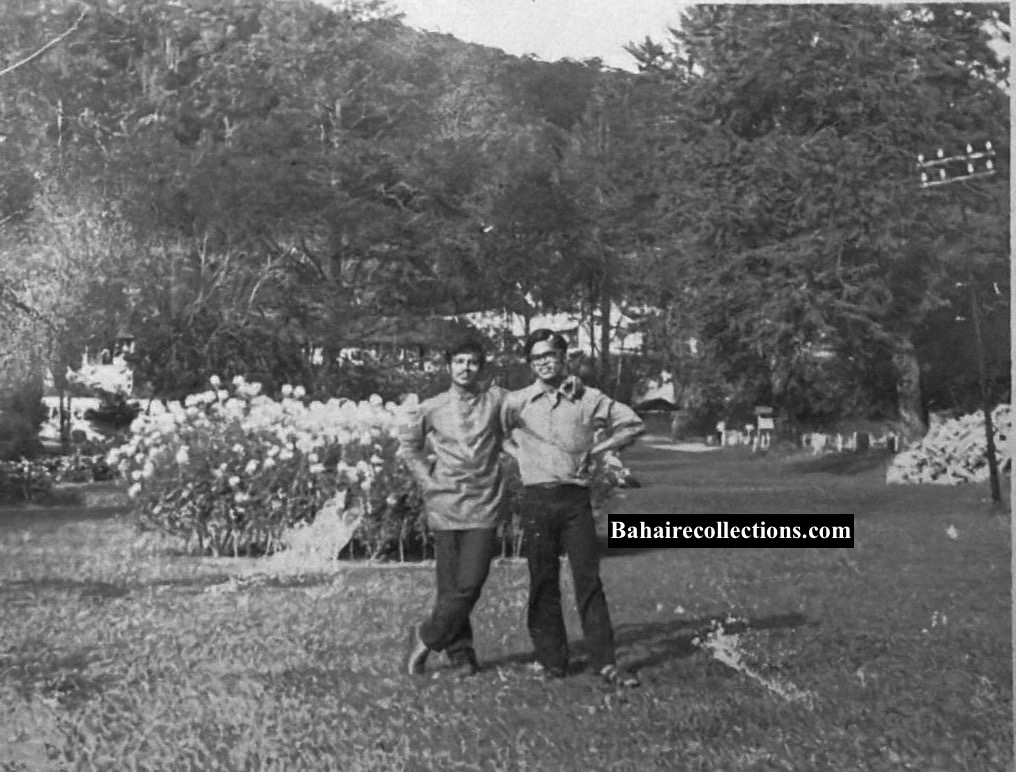
Krishnamurthi at left and Rama on right at the Rubber Research Institute settlement near Sungei Buloh town, 1973.
Having become a Bahá’í, life was not easy for Rama. The family saw that Rama was not actively involved in the Hindu way of life as his childhood days and avoided performing Hindu rituals during family ceremonies. There were days when Rama was away for Bahá’í conferences when the family had religious ceremonies conducted at home. Being the only one who did not participate in such religious events within the family he faced much criticism. Yet he stood his ground, as by this time he had already become as firm as a rock in the Faith he professed. His elderly mother loved the Faith and allowed him to practice the Faith.
Although Rama was residing in Sungei Buloh, he came every weekend to assist the national committees at the National Centre in Kuala Lumpur, especially in cyclostyling circulars and stapling them before being posted. When it was too late to return home, he slept over on bare cement with no mat, pillow or blanket. Many nights were passed as such. He never missed any regional gatherings held in Kuala Lumpur or Petaling Jaya which were the hotspots of Bahá’í activities in the central region in the 1970s. Likewise he did not miss any teaching conferences or summer and winter schools. He was always on the lookout for visits by Hands of the Cause from whose talks he was able to gain tons of knowledge. He had attained the presence of Dr. Rahmatu’lláh Muhájir, Collis Featherstone and Abu’l-Qásim Faizi in their visits to Malaysia, and met Amatu’l-Bahá Rúhíyyih Khánum at the inauguration of the Bahá’í House of Worship in India in December 1986, and attained the presence of Alí-Akbar Furútan at the International Teaching Conference held in Hong Kong in November 1976. He was one of those most privileged to have joined Mr. William Sears and his wife for breakfast during the official opening of the House of Worship in New Delhi. He met some of these Hands several times. They being “Diffusers of Divine Fragrances” created the deepest impact on his spiritual life.
Rama’s deep love for the Faith was remarkably boundless. Whenever there was work undone, he would on his own will come forward to provide assistance. In 1974, when the interior walls of the National Bahá’í Centre in Kuala Lumpur needed painting he came forward and painted it. Rama was also a good carpenter and had repaired some furniture at the National Bahá’í Centre. Whenever he visited the local Bahá’í Centre of Petaling Jaya at 15, Jalan 7/20 he would help to mow the grass on his own, without being asked. There was a time when the mowing machine was under repair and the grass in the compound had grown tall, he transported it to a mechanic shop on his motorcycle and got it repaired, and paid all expenses on his own. He was a self-made handyman.
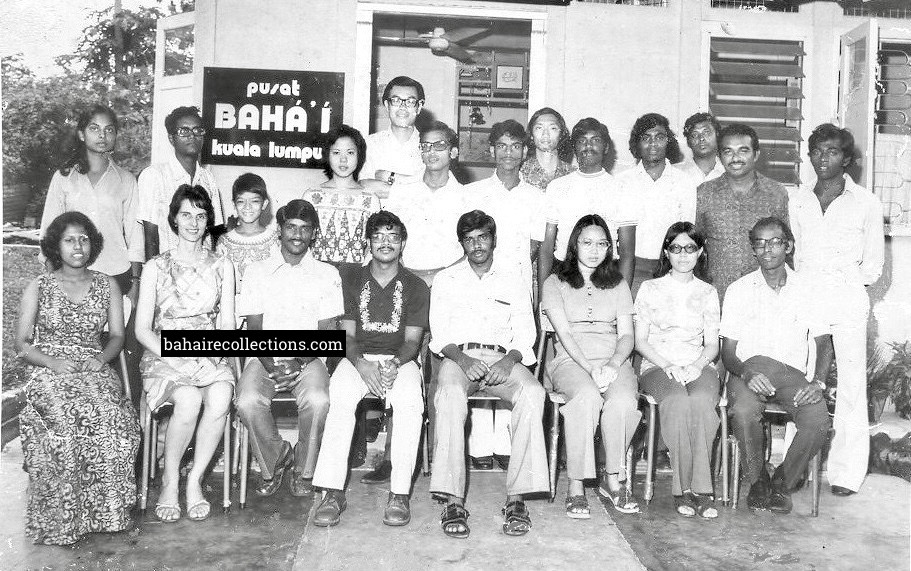
Rama stands fifth from left at a gathering of youth at the Local Bahá’í Centre in Kuala Lumpur, 1975.
Part of Rama’s Bahá’í life was frequently visiting the elders in the Faith, such as the late Counsellor Inbum Chinniah, to gain a deeper understanding of the Faith and to be inspired. Whenever there was no Bahá’í gathering, Rama used to visit some Bahá’ís at their homes. Yet another part of his Bahá’í life was to visit those downtrodden believers to give them the needed strength and confidence in life.
MARRIAGE
Through family arrangements Rama got married to Miss Nirmala Perumal, a citizen of India on 2 February 1979 in Kulim town according to Hindu rites, followed by Bahá’í marriage conducted by the Local Spiritual Assembly of the Bahá’ís of Butterworth that evening. The author made all the arrangements for this Bahá’í marriage and was a witness as well. Rama was a devoted husband. Sadly, the immigration rules at that time were so strict and rigid that he had to visit the immigration office a few times a month to get his wife permanent residency. This was highly stressful for Rama and his wife, which did take the toll on their health. Yet he was thankful to Bahá’u’lláh for gifting the couple with three wonderful daughters who were a source of their great happiness. Rama gave the best attention to the Bahá’í upbringing of his three daughters. He took them along to Bahá’í conferences that he attended to expose them to the Bahá’í way of life. During these rough days of dealing with the immigration office, he also drew strength from serving the Cause with greater effectiveness.
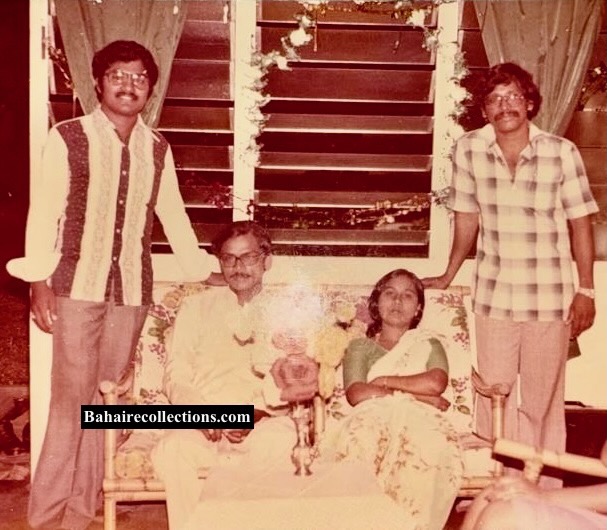
Bahá’í marriage in Butterworth. The couple flanked by the author on left and Murthi on right.
HIS CHOSEN PATH
Rama possessed a good command of both the English and Tamil languages. He could have offered his services for the English-speaking communities. But it was through his choice that he offered his services for the Tamil speaking friends, as that was one community that needed more manpower and assistance. After his marriage Rama was more involved in the activities of the Faith. He took determined efforts to immerse in the knowledge on Hinduism and was able to related the Hindu prophecies as fulfilled in the Bahá’í Faith. It was with this knowledge that Rama and the author went to several Tamil- speaking communities in the country from 1979 to 1981 to conducts classes on the fulfillment of Hindu prophecies in the Bahá’í Faith. In 1982 he joined the author in running a Tamil correspondence course on the request of the National Spiritual Assembly of Malaysia. This effort earned the appreciation of Hand of the Cause Mr. Collis Featherstone who was on a visit to Malaysia.
NEW PHASE
Rama’s involvement in Tamil translation began in 1993, with him volunteering to help with the Tamil news magazine as well as a deepening magazine titled Amutha Surabi produced with association with the author. Amutha Surabi was a highly informative magazine that received tremendous support from the Tamil-speaking community in the country. It ceased publication after the 19th issue was published. At that time Tamil software for the computer was scarce and he used a typography software called Fontographer and created a rudimentary font for use for this work. He would assist other friends and members of institutions with their Tamil translation needs.
The year 1996 saw another new phase in the Bahá’í service of Rama. He became the first full-time staff to be engaged by the Institute Board of Malaysia. In this new role Rama contributed towards the development of the institute process, more importantly the translation of the Ruhi books, messages of the Universal House of Justice, the International Teaching Centre and other institutions. When the institute process was mushrooming in Malaysia, Rama became one of the pioneer tutors to accompany friends to a few states to run the Ruhi courses with great success. Using the Yankee Leong Institute at Balakong, Rama ran several classes winning the hearts of believers in the country, especially the Tamil speaking souls.
The Bahá’í community in Malaysia lost an able translator when A. Anthonysamy passed away on 15 September 2012. He was a full-time staff at the National Office providing translation from English to Tamil of several literature, communications from the World Centre as well as communications from the National Bahá’í Office of Malaysia. Anthony’s sudden passing created a vacuum and Rama stepped into his shoes and continued the translation works. The task of translating all Feast Messages, circulars and communications into Tamil fell on the shoulders of Mr. Rama. In 1996 when the Institute process began, Mr Rama was engaged as a full-time staff of the Institute for Development, the main body charged with the implementation of the institute process in the country. At that time the first few materials in Tamil came from Tamil Nadu. But these were at times incomplete, for example, Book 1 did not have the collaborators notes and only parts of Book 3 were available. Members of the Institute Board approached several translators to assist, but most of them were busy with other commitments. It was then that Rama stepped in to assist and took on the bulk of the Tamil translation work for the Institute, which included many important documents from the Universal House of Justice, the International Teaching Centre, and OSED. While the Tamil Nadu Council and a group of translators there were bringing our many of the Institute materials, it was the assistance of Rama that expedited the translation of several of the institute material such as Book 5, Book 8 and the remaining higher books, as well as the revision of Books 1 & 2, the branch courses of Book 3 and so on. Often he sought the collaboration of Mr. Suppiah and Mr. Doraisamy with the review of these translations. The support of Mr. Suppiah for Rama’s translation work is significant and highly commendable. Among the Writings of the Central Figures, he collaborated with Mr. Doraisamy in bringing out Tablets of the Divine Plan, Tablet to Dr. Auguste Forel, Tablets to the Hague and ‘Abdu’l-Bahá in London, the White Prayer Book, Hidden Words and Selected Writings and the large format Tamil Prayer Book. He worked together via Zoom platform with Mr. Suppiah and Mr. Doraisamy to translate Paris Talks. Due to his health condition he was unable to participate in the online translation of books like Summons of the Lord of Hosts, Some Answered Questions, Sweetness of His Utterance and other titles, but he contributed his share of comments and reviews. Prior to this, he helped with the review of the Tamil translation of Creating a New Mind and Forces of our Time undertaken by Mr. Doraisamy and Mr. V. S. Maniam.
There are also a substantial amount of World Centre documents, messages and compilations which he translated. These include Reflections on Growth newsletters of the ITC, many Institute related documents issued by the ITC, documents released by ODAS, and other agencies of the World Centre. Quite frequently the friends in Tamil Nadu and Sri Lanka would turn to his assistance when some material needed to be translated urgently for institutional meeting. He will never say no to these requests and will burn the midnight oil to get these done. Rama also took efforts in making available copies of these books available in Tamil Nadu and Sri Lanka. He teamed up with his close friends and raised funds to subsidize the literature to make it affordable for the friends of Tamil Nadu and Sri Lanka. The Tamil speaking believers will forever be grateful to this blessed and humble soul for his untiring outpouring of Tamil translation.
A DECISIVE MOMENT
A time came when he was pushed against the wall, that he had to make a firm decision. He was denied his rightful promotion at his workplace, although he was a performing worker. This went on for a few years, and after careful prayers he went on optional retirement in 2000. He used to recall later that it was under strong disappointment that he had to make a strong decision to go on optional retirement, the wisdom of which he saw later. It was after his optional retirement that Rama became a full-time worker for the Cause, which gave him an inner peace, which he did not have all his life. The optional retirement opened another new chapter in his life. He had all the freedom to serve the Cause in whichever way he wanted. He had wanted to visit the Holy Land at least once in his lifetime. By the infinite blessings of the Blessed Beauty he visited the Holy Land on four occasions – first in 2001 for the official opening of the Terraces, followed by 2008, 2015, and finally in 2022. The trip of 2008 was with the family.
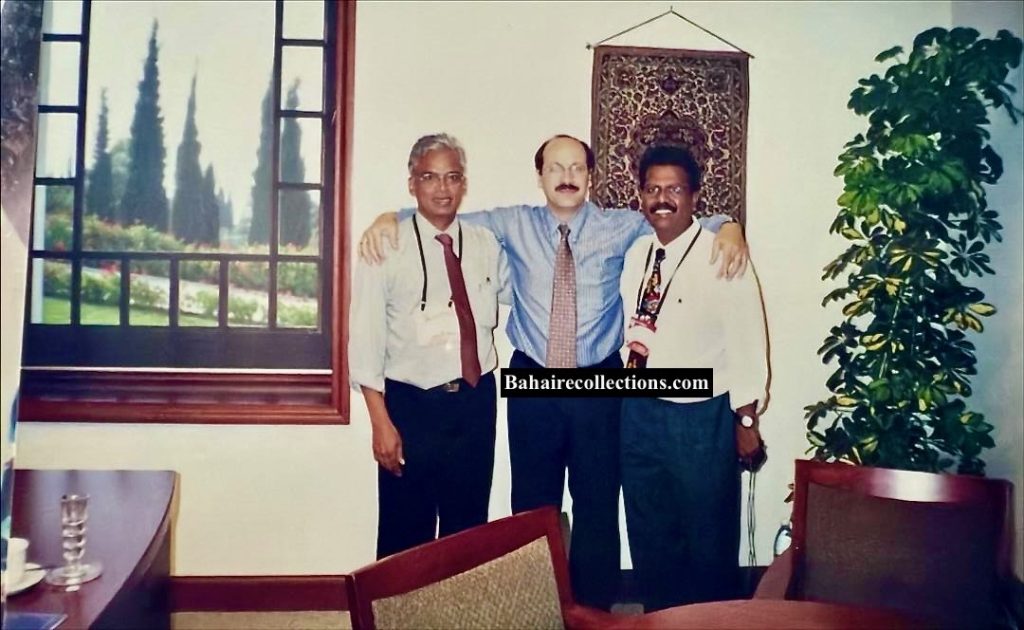
During the opening of the Terraces in 2001. L-R: Rama, Mr. Payman Muhajir and Doraisamy Suppiah.
SERVICES ABROAD
Rama started travelling abroad wherever there was a need of service. Much earlier as a new believer, in 1973 he went for travel teaching in Sarawak, which was his first travel teaching across the sea. In 1995, Rama went to serve in Laos. From 1998 onwards Rama made a number of trips to Singapore to conduct Ruhi classes there.
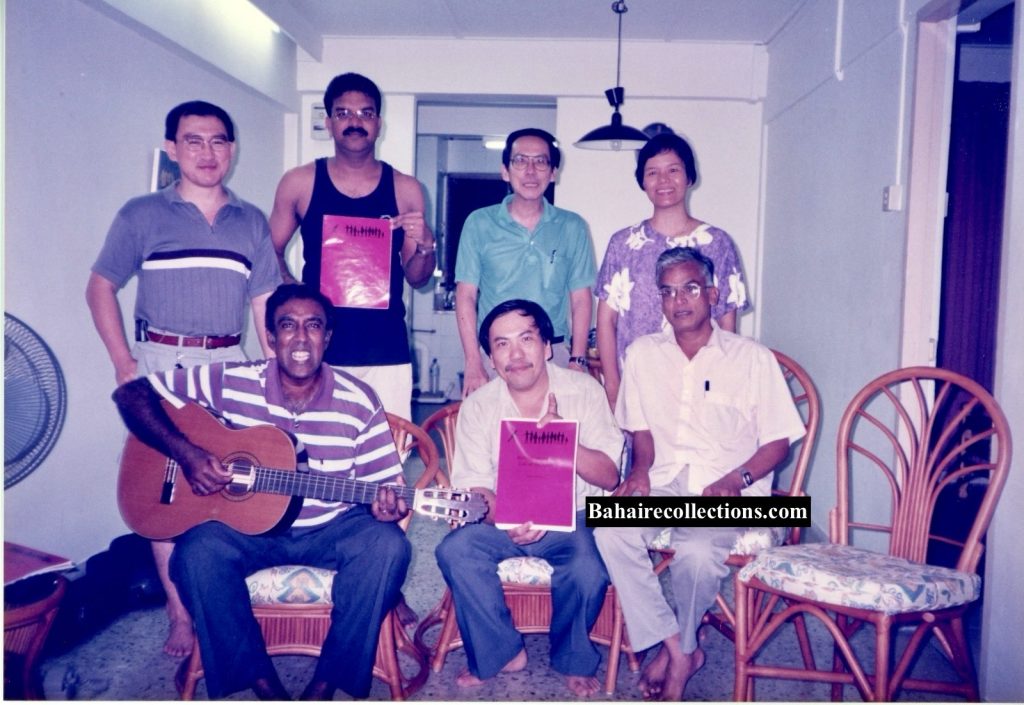
Rama seated at the extreme left at a Ruhi class in Singapore.
He made several trips to Cambodia from 2001 to 2006 to serve as a travel teacher. As an active tutor of Ruhi books, he produced the first group of Book 7 graduates in 2002. Under the guidance of former Counsellor Dr. Lee Lee Ludher, Rama offered assistance in developing literacy material for CORDE, the Bahá’í-inspired agency which developed core activities in Cambodia. He also provided assistance to Stamford College, which was later renamed the University of Education and Development (UniED), a Bahá’í-inspired University that was established by local believers in collaboration with Dr. Lee Lee Ludher. Rama taught English at this institution of higher education and later obtained a degree from the same institution in 2005. His degree was in community development and the thesis was based on health and nutrition of Asli children in villages in Sungkai which allowed for a more holistic understanding of the social economic reality of the Asli region.
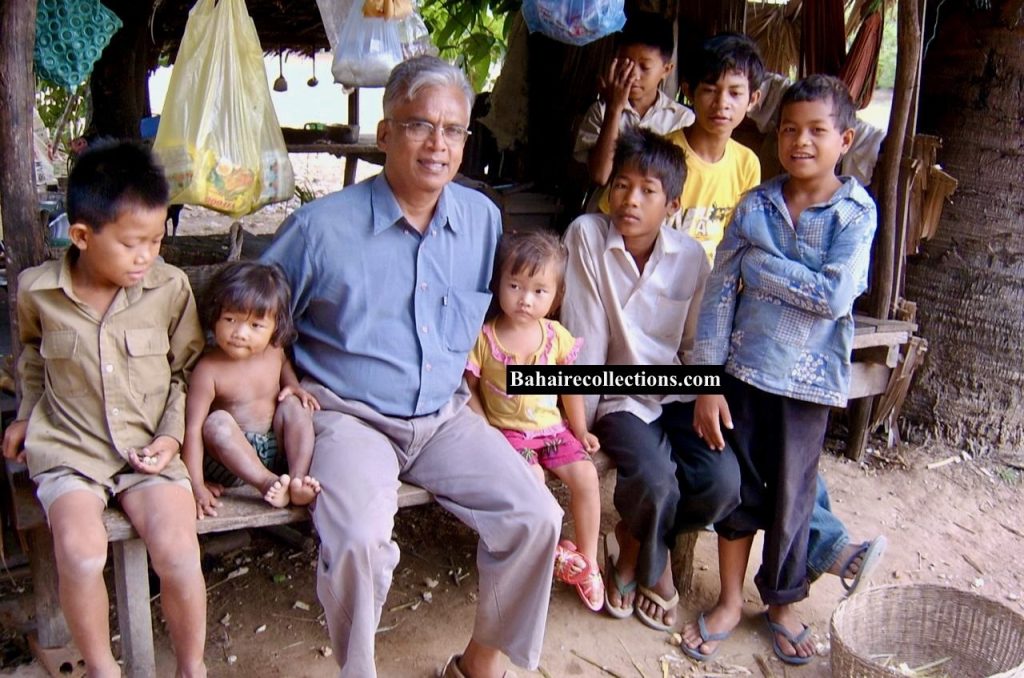
Rama with Khmer children at Kampong Thom, Cambodia, 2006.
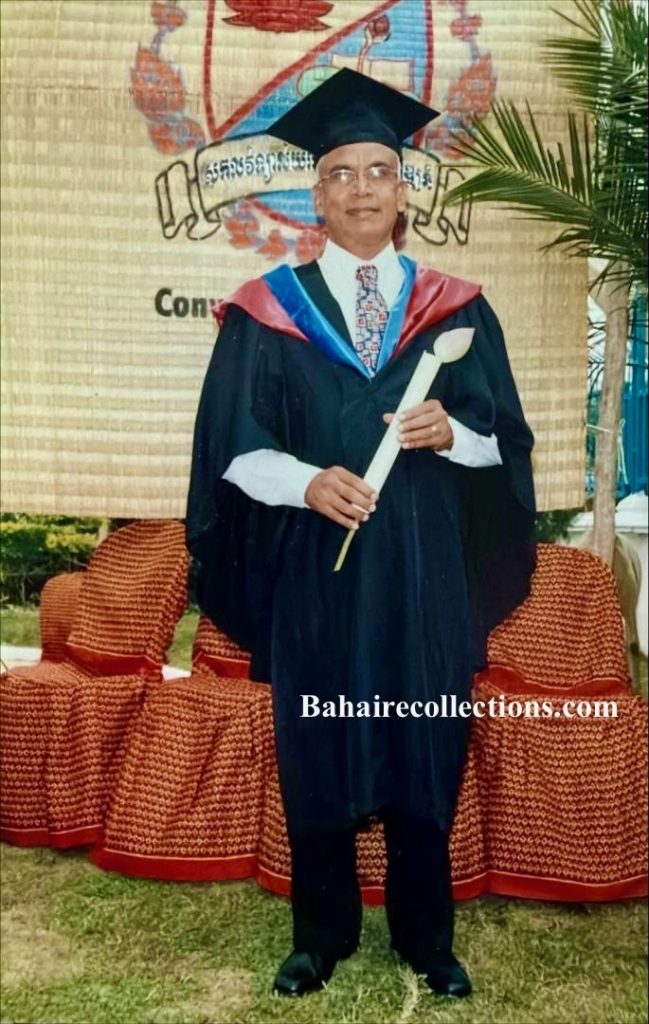
Rama as a graduate, 2005.
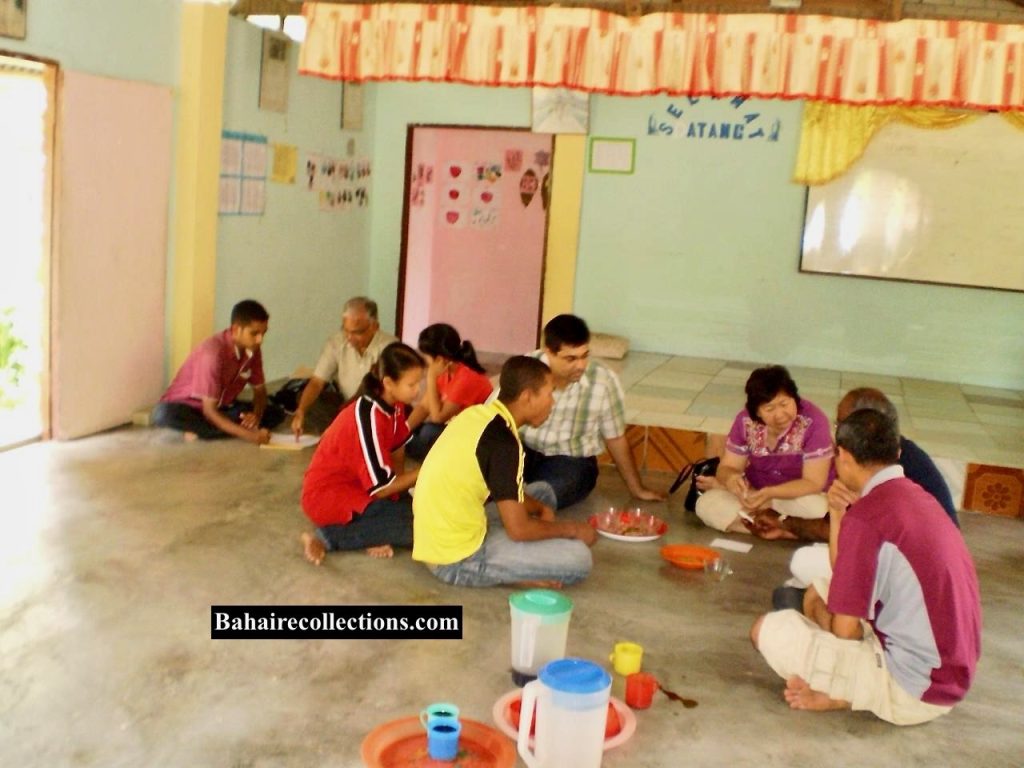
Rama second from left and Counselor Dr. Loh Lee Lee, third from right in an Asli village in Sungkai, Perak in 2009.
Rama emerged as a highly respected figure in the Bahá’í community in Cambodia. He was viewed and accepted as highly knowledgeable, inspiring, and deeply committed to the Faith. During his tenure at UniED, the Bahá’í students learned a great deal from him, not only academically, but also about the administrative aspects of the Bahá’í Faith. Rama was always present at community events and gatherings in Cambodia. He was a constant source of support and encouragement, generously sharing his experiences and wisdom with all the youth. His example and guidance inspired many and motivated them in their efforts to serve the community. Rama guided several local youth and young adults in Battambang and other communities in their paths of service. While based in Cambodia, he also made a short-term travel teaching trip to the neighbouring Vietnam.
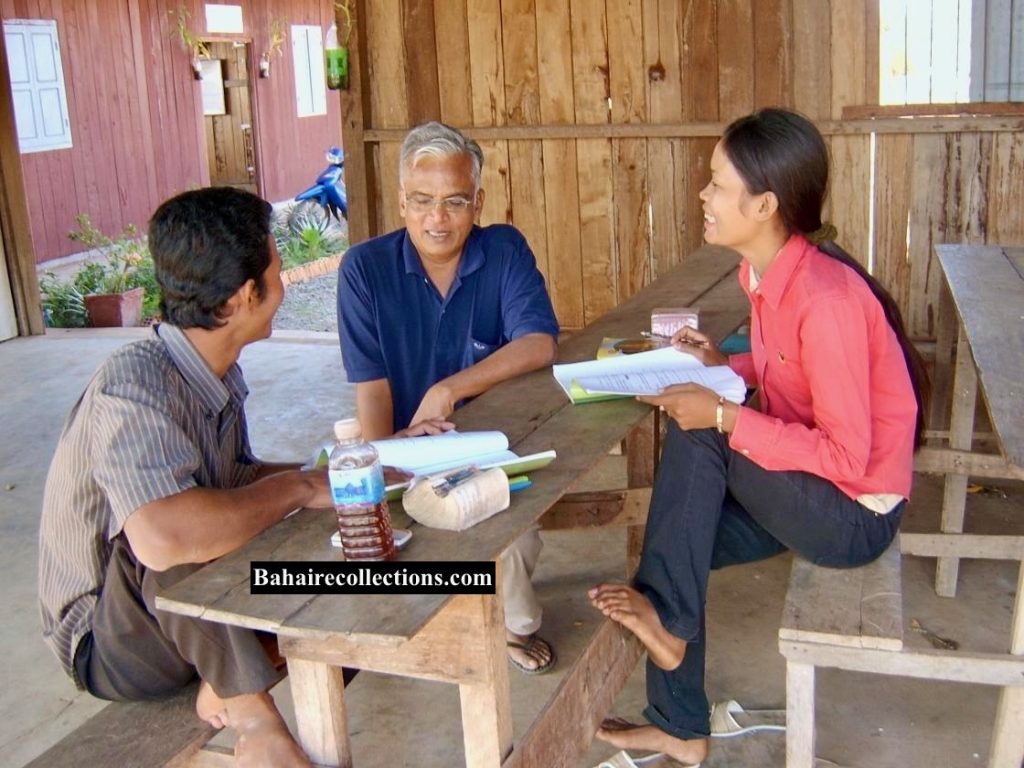
Battambang, Cambodia in 2008.
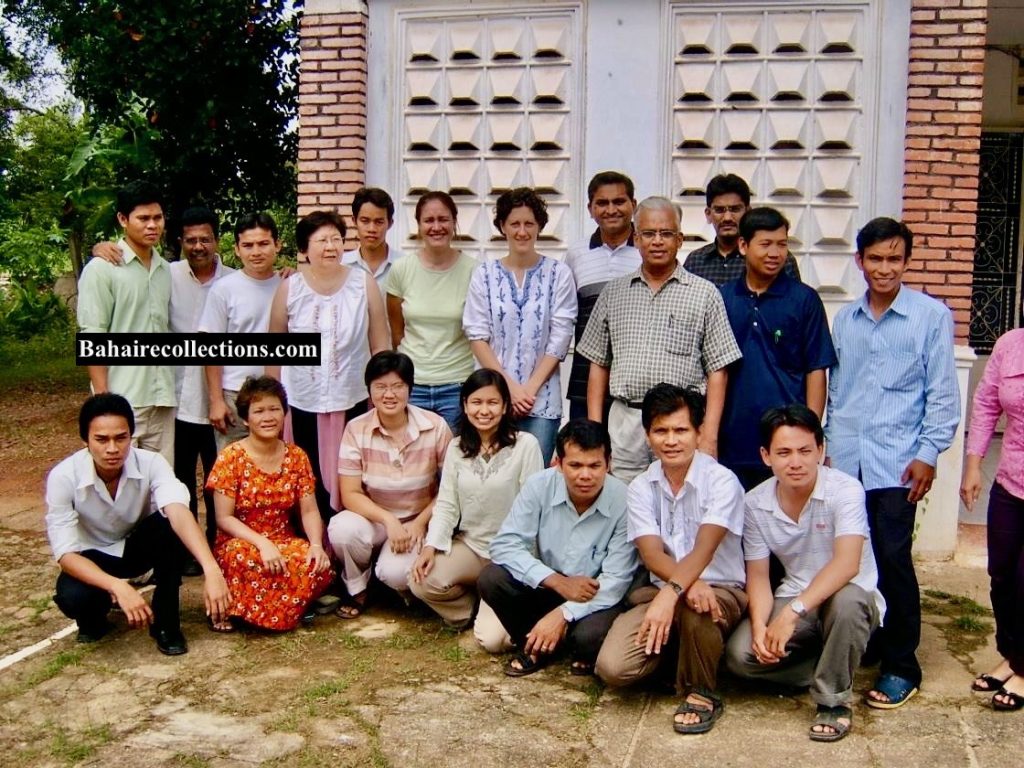
Rama standing third from right, with some youth in Battambang, Cambodia in 2008.
Rama extended his services to Tamil Nadu too, especially in the translation of Bahá’í literature from English into Tamil language. In 2015, he obtained the Overseas Indian Citizenship (OCI) certificate issued by the Government of India, by which he could reside in India for life. Effective 2016 Rama made numerous trips to Tamil Nadu for carrying out translation works for the State Bahá’í Council. This service lasted till 2018. On his indelible services for Tamil Nadu, Mr. Bharat, Secretary of the Regional Bahá’í Council of Tamil Nadu and Pudhucherry (Pondicherry) has this accolade placed upon him, “Mr. Ramasamy, was a devoted and long-standing contributor to the Bahá’í community. His remarkable efforts in translating Bahá’í literature into the Tamil language over many decades have left an enduring legacy that will continue to enlighten and guide generations to come. He was not only a skilled translator but also a humble servant of the Cause, whose life was a shining example of steadfastness, service, and devotion. His work in rendering the Ruhi materials and messages from the Universal House of Justice and other institutions into Tamil was marked by accuracy, clarity, and deep spiritual insight. His translations have made the Teachings more accessible to Tamil-speaking communities and have strengthened the collective capacity for study, reflection, and action. He has been a profound source of inspiration to all of us in the Tamil Nadu and Puducherry region. During his visits, we were deeply moved by his humility, dedication, and the joy with which he served. His presence uplifted every space he entered, and his encouragement empowered many others engaged in the path of service. What is even more inspiring is that Mr. Ramasamy remained actively involved in translation work until his very last breath, even while enduring critical health conditions. His unwavering commitment and unconditional love for the Cause were so profound that his final wish was to share his invaluable body of translation work with the Literature Team of Tamil Nadu. We are truly honored and deeply moved by this last act of service, which stands as a powerful testimony to his lifelong devotion”.
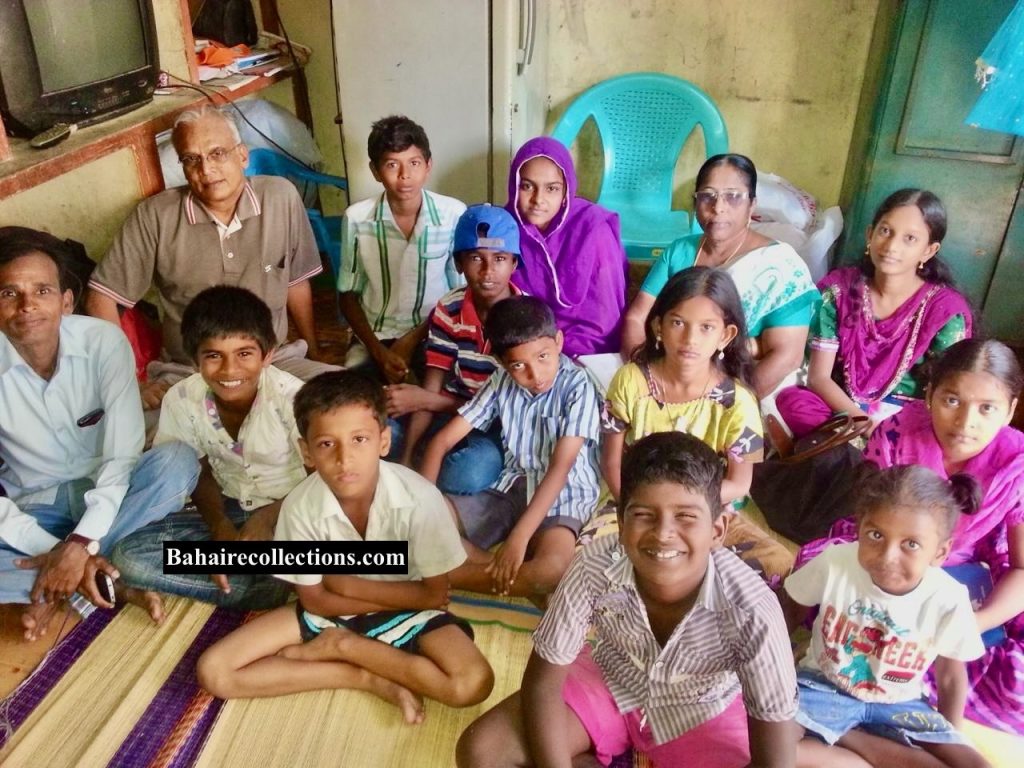
Rama seated at back row left with some believers in Chennai, Tamil Nadu, 2016.
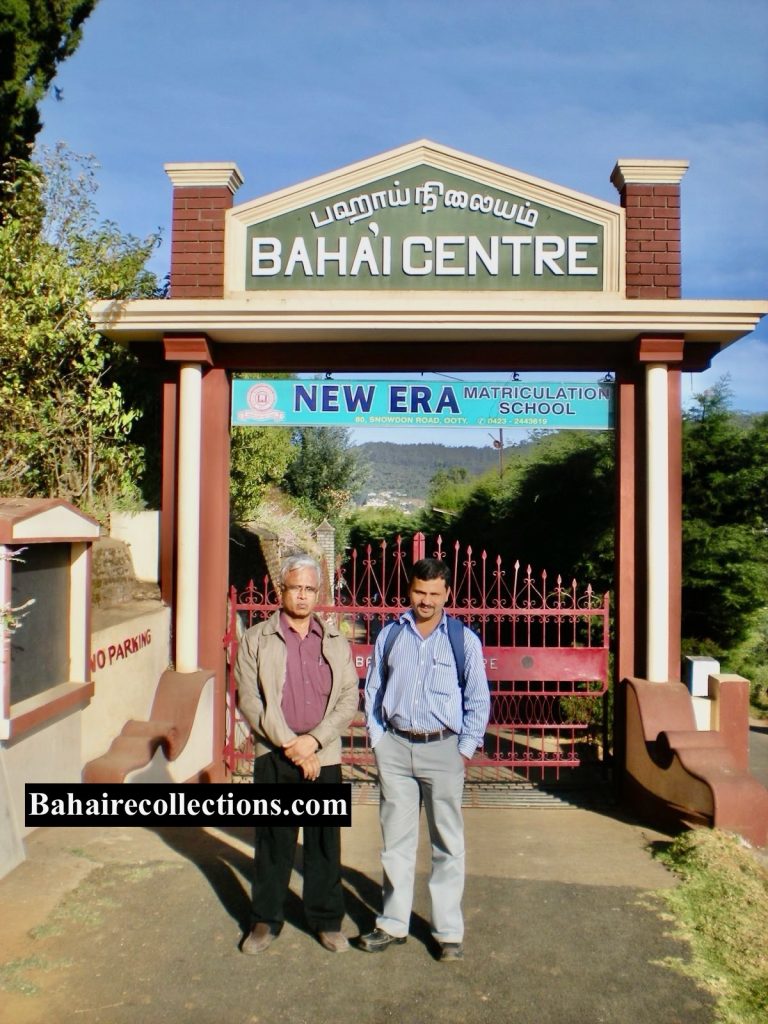
At the Bahá’í Centre in Ooty, Tamil Nadu. Rama at left and Santhosh Kumar at right.
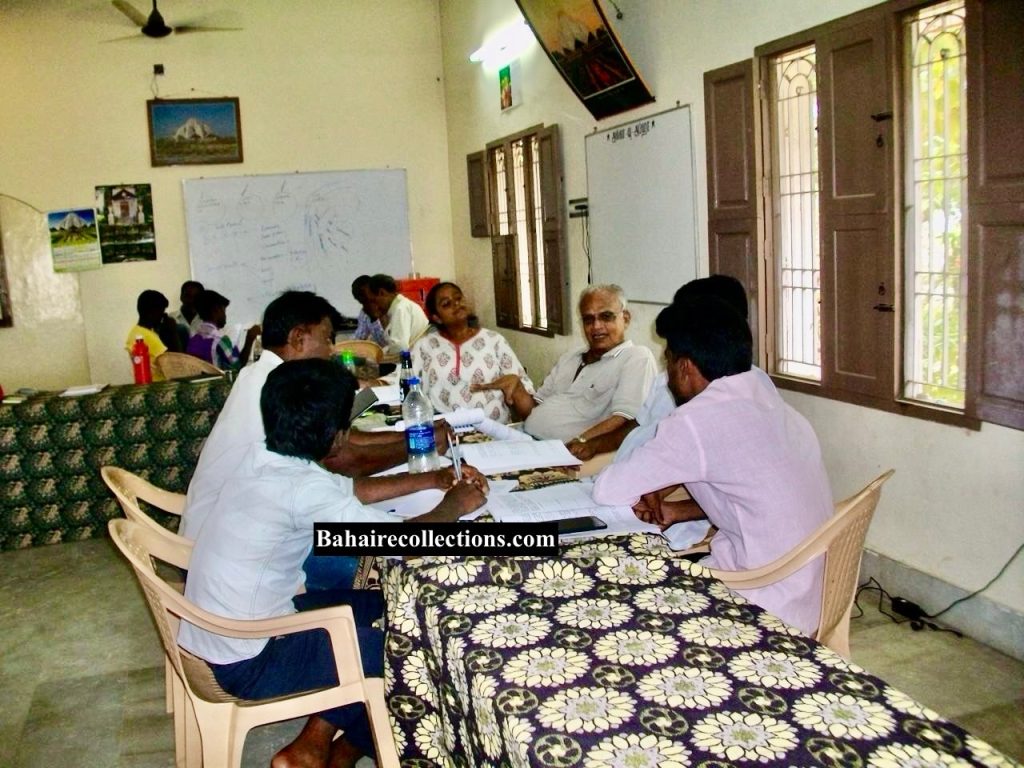
At a Ruhi class with some believers in Chennai, Tamil Nadu, August 2016.
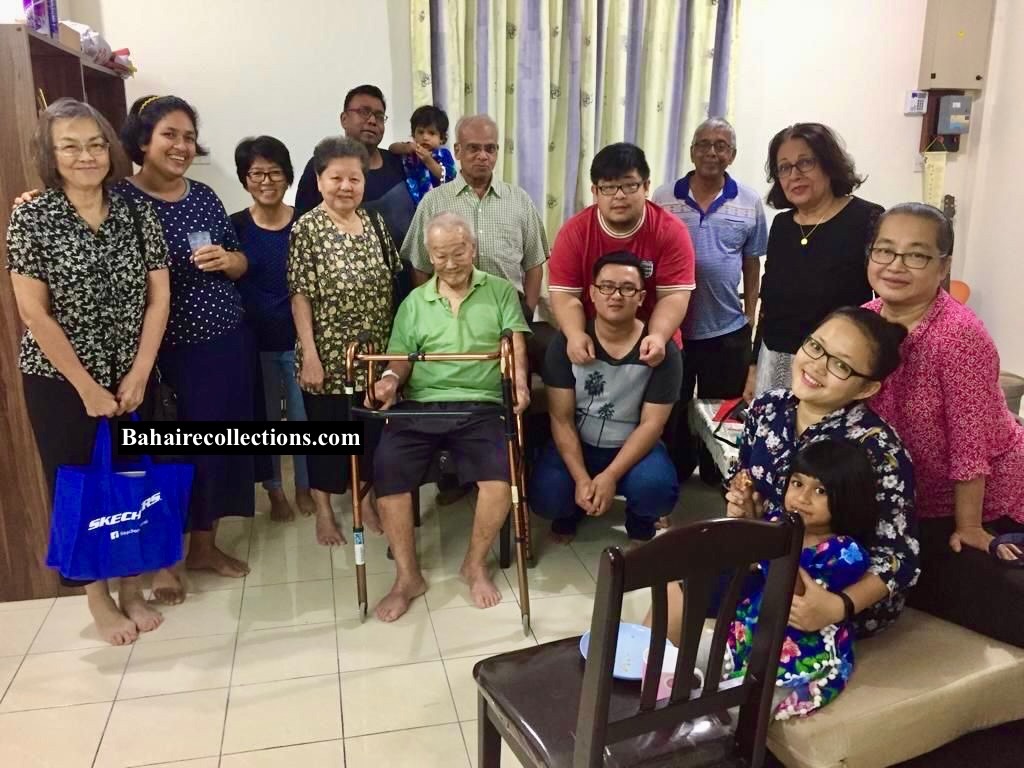
Rama stands behind Mr. Chin Yun Sang (seated, holding a walker). Photo taken in 2018.
In 2018, he went to Brunei to tutor the Tamil speaking friends there. Effective 2019, Rama made two trips to Sri Lanka to assist them in the translation work there and created a permanent impact in the hearts of the believers he associated with. Mr. Dinesh S. Thilakarathne, Secretary of the National Spiritual Assembly of the Bahá’ís of Sri Lanka has this to say of dear Rama, “Mr. Ramasamy visited Sri Lanka to participate on Study sessions and whilst he was attending them, he reviewed the Tamil translations of those materials which are the Ruhi Books and Social Action materials. During these two visits he became very close with the Bahá’í friends here”.
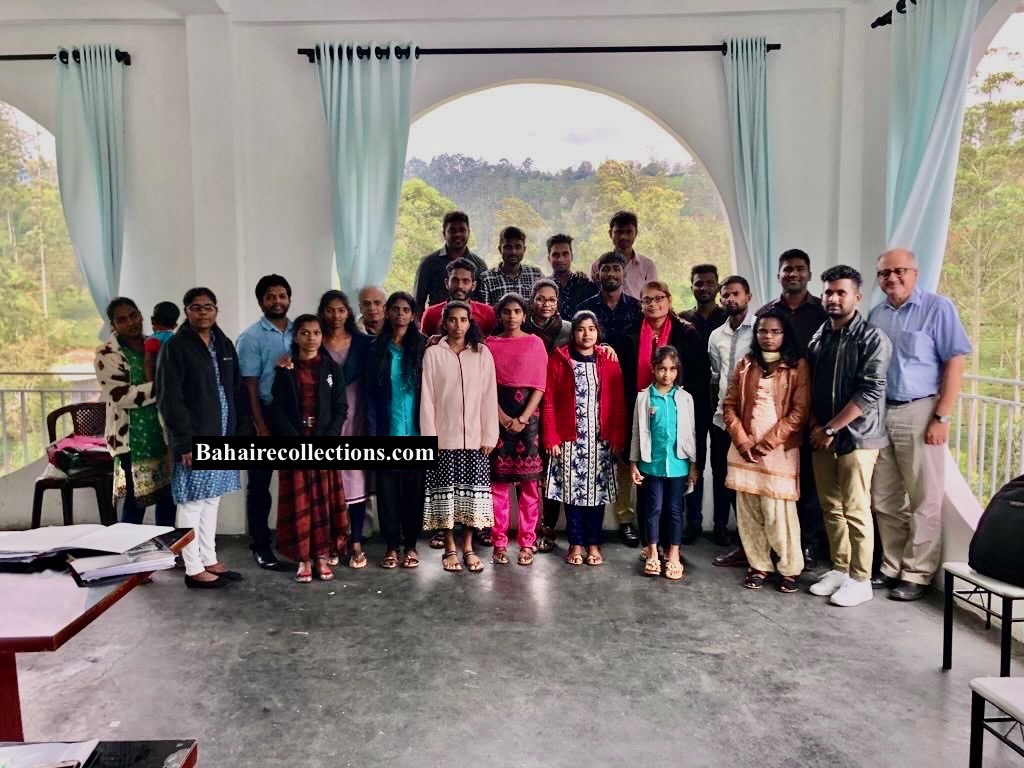
Rama standing sixth from left at a Ruhi Course in Sri Lanka in 2019.
RAMA LOVED LAUGHTER
Suffering throughout his life has been the lot of this God-intoxicated believer. Not many would have undergone such untold trials and tribulations as Rama. But Rama balanced his life with much laughter and witty jokes. He simply had the uncanny ability to make a joke out of all the adversaries he faced in life. In the early days he was a regular reader of the weekly Scottish comic magazines called DANDY and BEANO. He took great liking for them and had a huge collection during his bachelor days. Even in his thirties whenever he saw these magazines lying around, he would stop all his work and immerse into them to derive joy. He was a fan of movies of Charlie Chaplin again to release his tension. He was an ardent lover of old songs and movies which gave him wings of joy during moments of depression. Rama himself was one who generated so much radiance and great wittiness in his conversations that believers flocked around him to laugh their lungs out. Whenever Rama met a believer, he always had witty jokes to share. After the usual greeting of Alláh-u-Abhá, he always had some jokes to share. Friends too looked forward to meeting him as they too were gladdened by his jokes. His very company enhanced one’s spirit. At gatherings he would be on the lookout for those who were equally witty. And within moments he would be in the middle of a large group, along with the author, from which roaring laughter would explode.
A GREAT TEACHER
Rama excelled in running deepening classes, but was also a great teacher of the Faith. He undertook several teaching trips in the company of his fellow believers to places near and far. Throughout the journey Rama would inspire his fellow passengers with stories from the history of the Faith, or quote Writings that he had read most recently. Thus, friends always looked forward to be in his company for teaching trips as it will be both a deepening session and a teaching trip. He as truly obsessed with teaching the Faith. Rama was able to come out with astonishing analogies when trying to drive home a point during teaching the Faith. He never argued, but believed in putting forth arguments with a cool and calmness, that many enquirers appreciated him. The enquirers who accepted the Faith through his teaching efforts and those believers deepened by Rama are far too many to be listed. Whenever he found time he also took teaching trips to some Asli villages in the country.
Rama had a genuine love for reading, which made him wonderfully well-informed and insightful. Also he is a keen researcher especially on the study of comparative religions and fulfillment of prophecies of past religions. He even ran a website posting Baha’i news and articles in the Tamil language that enjoyed global readership. Rama researched and wrote a manuscript on the prophecies of Saint Ramalingar that were fulfilled in the Bahá’í Faith. He wanted that to be published as a book but that was a desire not fulfilled during his lifetime owing to his unexpected health deterioration.
A MAN OF GREAT VIRTUES
For Rama, the Faith was not just a part of life—it was life itself. Whenever there was some work to be done for the Faith, he never procrastinated. He immediately acted on completing the given task, sometime foregoing sleep, rest and even meals. Working throughout the night was nothing unusual to him. For days he would not answer phone calls, including the wee hours of the morning.
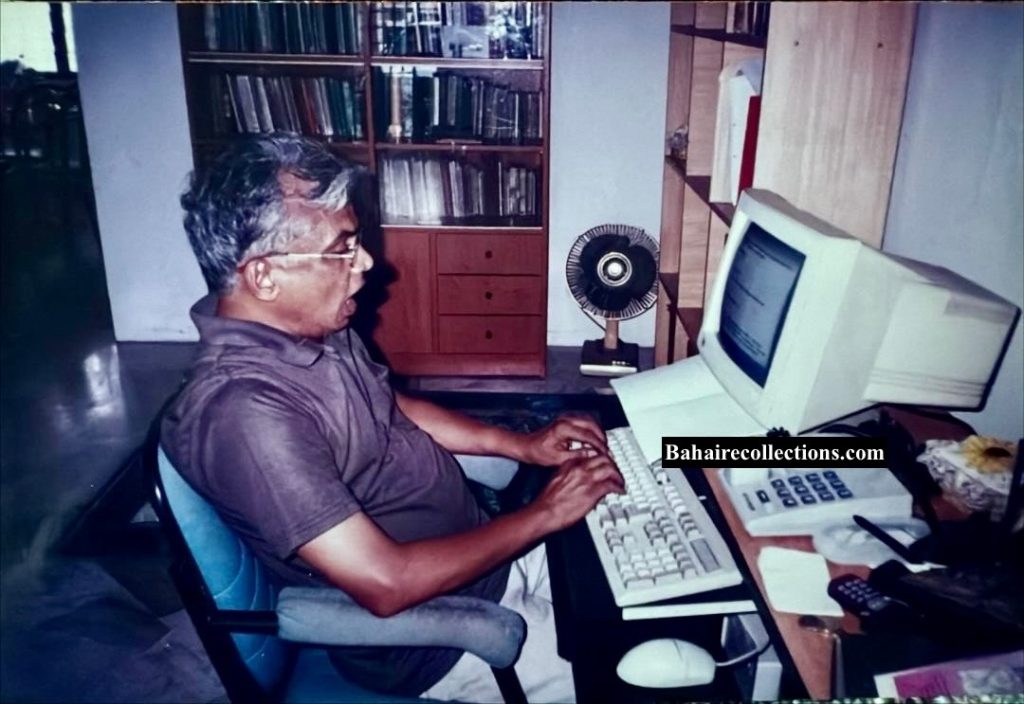
Forgets the world around him when immersed in translation work.
Whenever Rama saw some believers serving the Cause, he would give them all the encouraging words and even give a helping hand. There was always a rare kind of irresistible charm about Rama that once a person associated with him, he or she would remain his friend for life. That was the type of contagious influence that Rama was able to cast upon people he came in contact with. He was a very loving and tender-hearted believer loved by all whether young or old. He never sought prominence, name, or fame in the community, but only service! It was this rare quality that attracted many to him. He totally loathed backbiting. Whenever someone approached to complain about another, he would remark, “Why do you have to bite the back of another person? We have many better things to do in life!” Patience under all conditions and forgiving one who had hurt him most were his cardinal principle in life. He was not so much a worker in committees, but more of a lone worker who produced and delivered what was needed in the community. Owing to his limited financial means, especially after his retirement Rama lived a very simple life, yet there is nobody in the community who had visited him and left without having partaken of meal in his house. The way he managed his financial needs is truly amazing as there was no time he had depended on any other person for support. The family was very contented. He dressed simple and lived in modest homes with basic facilities. He first lived in small quarters in the Rubber Research Institute settlement provided by the management and then moved into more comfortable houses over the years. He spent his final days owing to health problems in the home of his daughter Parivadini in Kajang. Whenever land was available around the houses Rama resided, he grew vegetable and fruit trees, as farming was one of his favorite hobbies. After using Honda motorcycle since he was employed in 1971, for the first time he bought a second-hand Opel Gemini car in 1994. In 1995, he bought a brand new Perodua Kancil car. Rama lived for himself, and never looked upon others to decide how he had to live. It was only when his three daughters Dr. Priya, Parivadini and Vanathi, started to work did he start to breath an air of relief with they sharing the financial burden of the family. Despite some setback in life, the spirit of service that dominated his being never faded and he kept serving with full force, much to the astonishment of the community. There came a time when he was totally disturbed, distressed and almost gave up hope in life. Then he begged Bahá’u’lláh with all his heart, which was the only desire in his life. And that too was not for himself. He beseeched Bahá’u’lláh to enable his three daughters to be well educated for the purpose of serving the Cause as they grew up. This weighty and meaningful wish was granted, and the three daughters are today well-educated and married to believers of good standing, and are serving the Faith effectively to the satisfaction of Rama and certainly the Blessed Beauty as well. What more would a loving and dutiful father want?
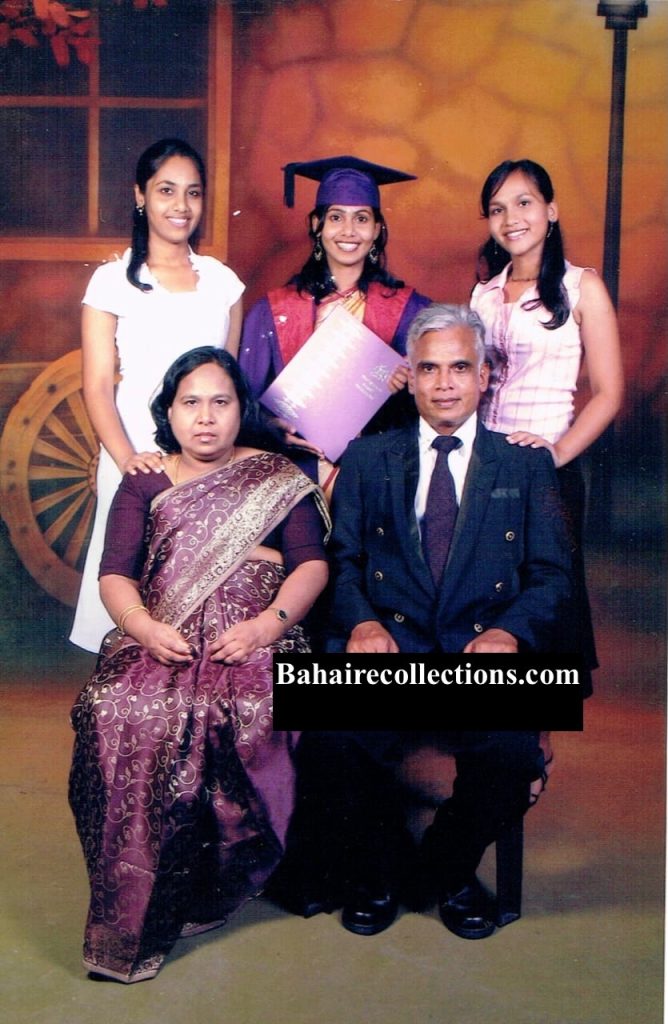
After graduation of his eldest daughter as a medical doctor in 2006. Standing at the back are L-R Parivadhini, Dr. Priya and Vanathi.
HIS PASSING
When Rama contracted some respiratory ailments for which there would be no cure, he informed his friends that this would be a painful death and all he wanted was a peaceful transition to the next world. Never once he feared death as he was fully convinced that death was nothing but a messenger of joy. Rama saw a wisdom in this ailment that would take him to the tomb. He felt the Blessed Beauty was preparing his wife and children to accept his imminent death. What was astonishing was that Rama was still doing Bahá’í work when he was admitted into the hospital, and fitted with respiratory support. He ensured he brought his laptop along the day he went to hospital in case he would be admitted. He managed to get permission to bring his laptop into the High Dependency Unit of the Institute of Respiratory Medicine in the Kuala Lumpur Hospital by his second day of admission and it remained with him till three days before he passed away, as by that time his health situation had deteriorated. The precious soul of Rama winged its flight to the Abhá Kingdom on 16 April 2025, after having served the Cause relentlessly for more than half a century. Rama was the first to be buried in the Shah Alam Memorial Park. This burial ground was recently approved by the Selangor State Government after many years of appeal. As such it was a special burial in many ways.
Reading the life and legacy of Rama, one would conclude without the slightest hesitation that this great soul was chosen by the Blessed Beauty to play special roles for His glorious Cause, which were very well performed. Today he is immortalized in the pages of Bahá’í history, and future generations would emulate him in many ways. The Malaysian Bahá’í community would remember Rama as one of the greatest followers who had consecrated his entire effort and energy wholly to the glorious cause of Bahá’u’lláh until the last breath. With his passing a vacuum has been created, which shall not be filled for many more years to come. Far great have been the attainments and unforgettable the services of this humble servant, carried out quietly. It is only to a keen observer that the splendid and matchless record of his manifold areas of service become evident. Rama has won imperishable distinction through his relentless service carried out in his own quiet, but most effective way. His was a path less travelled! For all the loving services and sacrifices Rama had rendered with so much energy and zeal we can be assured that he is in the loving arms of Bahá’u’lláh in the Abhá Kingdom, enjoying the incalculable blessings that he more than deserves.
Whither can a lover go but to the land of his beloved? – Bahá’u’lláh
A. Manisegaran
30 April 2025
Copyright©bahairecollections.com
You may leave your comments at: info@bahairecollections.com